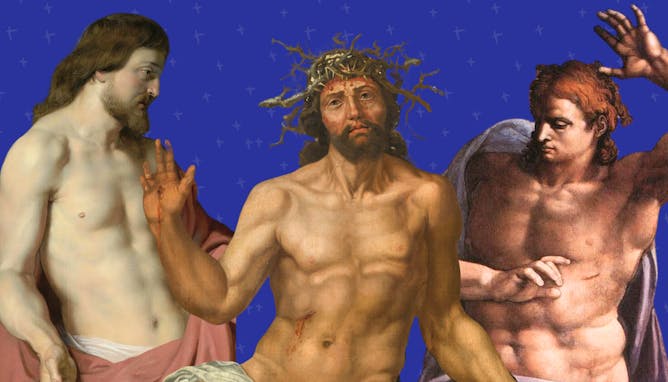|
The latest world happiness report was recently published, casting Finland as the happiest place on Earth. But how do you really measure happiness? When we’re sad or suffering from poor mental health, psychologists encourage us to remember sadness is a feeling and it will pass – why not the same for happiness? And as anyone who has plastered on a smile to get through a social engagement on a bad day will know, happiness is easy to fake.
Researchers at Lund University were also skeptical and carried out a study to find out what people were really thinking of when presented with the same question asked to participants in the world happiness ranking. They found that often people are thinking about wealth and status and that, actually, most of their participants didn’t want to be on the top rung of the “best life possible” ladder.
Meanwhile, it has been ten years since the word “aphantasia” was coined, describing people who have never been able to visualise things in their mind. Read this fascinating explanation of what we have learnt about aphantasia in the last ten years, by the researcher who first came up with the term.
And as Easter approaches, we tackle the burning theological question of why Jesus is sometimes depicted with a six pack.
|

|
Jenna Hutber
Commissioning Editor, Science
|
|

Cast Of Thousands/Shutterstock
August Nilsson, Lund University
Much is written about the world happiness rankings. But it seems not everyone interprets the survey question the same way.
|

LJSphotography/Alamy Stock Photo
Adam Zeman, University of Exeter
Around 4% of the population are unable to see things in their mind’s eye. Except when they are dreaming.
|

(L-R) The Last Judgement by Michelangelo (1541), The Resurrection of Jesus Christ by Piero della Francesca (1463) and The Rockox Triptych by Rubens (1613–1615).
Sistine Chapel/Museo Civico/ Royal Museums of Fine Arts of Belgium
Chris Greenough, Edge Hill University
The Bible is full of strong men and pumped prophets.
|
Health
|
-
Lisa Garwood-Cross, University of Salford
Can eating lots of pineapple change the smell and taste of the vulva and vagina? An expert examines the latest fruity vaginal health hack.
-
Samuel J. White, Nottingham Trent University; Philippe B. Wilson, Nottingham Trent University
Honey has long been used as a natural remedy for many ailments.
-
Dan Baumgardt, University of Bristol
Who doesn’t love a chocolate egg or two at Easter? Here’s why a little indulgence may not do much harm.
|
|
World
|
-
Cara Levey, University College Cork
Hundreds of thousands of people took to the streets in Argentina to commemorate victims of the country’s military dictatorship amid renewed concerns for human rights.
-
Paul Whiteley, University of Essex
Young voters have not always swung in different ways to older generations, as a look at historical data shows.
-
Amanda Cahill-Ripley, University of Liverpool
Security council resolution 2728 demands an immediate ceasefire in Gaza. But can the UN enforce it?
|
|
Politics + Society
|
-
Soraya Harding, University of Portsmouth
British elections are pencil and papers affairs, which makes them difficult to hack. But the breach of millions of people’s details is still a deeply serious matter.
-
Gemma Davies, Durham University; Paul Arnell, Robert Gordon University
The WikiLeaks founder has been given a temporary reprieve from extradition to the US.
-
Anna McKay, University of Liverpool
Convicts worked in the dockyards in Bermuda for 40 years.
|
|
Environment
|
-
Kevin Collins, The Open University
The idea cannot be stopped, even if geologists have voted not to recognise a new epoch.
-
Nicholas Ray, Nottingham Trent University
Egg cases of sharks and rays can be found washed up on the shore. Citizen science data helps scientists understand the life cycles of these marine animals and how to best conserve them.
-
Jack Marley, The Conversation
And despite soaring cocoa prices, farmers aren’t seeing the benefit.
|
|
Science + Technology
|
-
Huw Morgan, Aberystwyth University
The eclipse will allow scientists to get rare measurements of the Sun’s atmosphere.
-
Colin Caprani, Monash University
Bridges are getting safer – but their designers need to keep up with the ever-growing size of cargo ships.
|
|
Business + Economy
|
-
Renaud Foucart, Lancaster University
Research suggests that most of us are pretty trustworthy.
-
John J Oliver, Bournemouth University
The video streaming industry has reached a tipping point.
|
|
|
|
| |
|
|
8 March - 18 May 2024
•
Glasgow
|

|
25 - 28 March 2024
•
Birmingham
|

|
26 - 27 March 2024
•
Southampton
|

|
|
|

|
|
|
|
| |
| |
| |
| |
| |
|
|